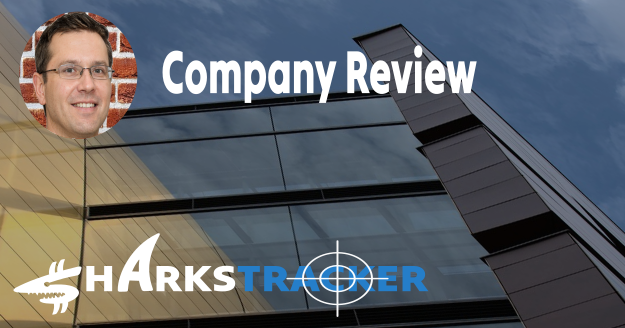AeroVironment Expands Workforce and Operations to Florida
2023-09-08
AeroVironment recently held a call meeting to discuss their decision to expand their workforce and their progress with customers. The meeting also highlighted the integration of their unmanned systems with advanced common controller technology enabled by AI.
The most important topic discussed in the meeting was the company's engagement on additional contracts and the demand for their systems, particularly in Ukraine.

The single most interesting topic discussed in the meeting is the company's decision to expand its workforce outside of California and areas closer to its customers by establishing a site in Florida. This decision was driven by several factors, including the talent base, intellectual property (IP), product, progress with customers, and the ability to support future growth.
Expanding the workforce outside of California and closer to customers was seen as a strategic move that aimed to improve the company's operations and enhance customer service. By establishing a site in Florida, the company could tap into a new talent pool and potentially benefit from a lower cost of doing business. This expansion also allowed the company to be more geographically diverse and better serve its customers across different regions.
The CEO expressed strong confidence in this decision, highlighting the benefits it would bring to the company, shareholders, and customers. By integrating AeroVironment, a leading unmanned systems provider, with advanced common controller technology enabled by AI from Tomahawk, the company aimed to create an integrated system solution for customers. This integration had the potential to enhance the company's product offerings and provide a competitive edge in the market.
The feedback received so far regarding this decision has been positive, indicating that it has been well-received. This suggests that stakeholders, including employees, shareholders, and customers, saw the value in expanding the company's workforce and operations to Florida. It also indicated that the decision aligned with the company's overall growth strategy and long-term goals.
Overall, the company's decision to expand its workforce outside of California and establish a site in Florida was a significant move that had the potential to drive growth, improve customer service, and enhance the company's product offerings. By leveraging the talent base, intellectual property, and progress with customers, the company aimed to support future growth and create an integrated system solution that met the needs of its customers.
The market outlook for the company was positive, with improved bottom-line results and investments for future growth. The geopolitical environment and trends towards unmanned platforms supported their confidence. However, the impact of a continuing resolution on contract timing was a concern. They remained optimistic about fiscal year 2024, expecting necessary budget dollars and prioritization from the current administration. The company was leading in autonomy and target recognition solutions, which were in high demand. They were also well-positioned in areas like loitering munitions and small unmanned systems, with increased investment from the U.S. Department of Defense. The company's record first-quarter results and strong global demand were reflected in their funded backlog. The acquisition of Tomahawk Robotics was expected to further enhance their outlook for interconnected solutions.
The key drivers of the business included improved margins and bottom-line results, investments for growth, confidence in the geopolitical environment and unmanned platforms, anticipation of a continuing resolution by the U.S. government, broad support for systems and services, development of in-demand solutions, increased investment by the U.S. Department of Defense, record first-quarter results and global demand, acquisition of Tomahawk Robotics, positive outlook for the fiscal year 2024 budget, and the addition of Admiral Phil Davidson.
The company's plans for its product/service included engaging in additional contracts, renewing contracts, fulfilling additional requests, and expanding their backlog. They expected to expand their product/service offerings, meet the growing demand for their systems, and continue to receive orders for unmanned systems, small UAS, and loitering munitions.
The most important Key Performance Indicators (KPIs) discussed in the meeting were not explicitly mentioned. However, some relevant information could be inferred from the conversation. The backlog, contract renewal, and demand for systems were highlighted as important factors for the company's future revenue and growth prospects. Tracking the backlog, the ability to renew contracts, and the demand for their systems were crucial KPIs for the company to ensure revenue stability and growth.
The company's outlook for the quarter/year was optimistic. They had delivered record first-quarter results and had a record funded backlog, indicating strong global demand for their solutions. The acquisition of Tomahawk Robotics was expected to improve the outlook for interconnected unmanned solutions and open new avenues for growth. The company believed that the current administration would continue to provide the necessary budget dollars and prioritization for their mission-critical unmanned systems. They were also well positioned to thrive in areas such as autonomy, automatic target recognition, tracking, loitering munitions, and small unmanned systems. Overall, the company's fundamentals looked better than ever, and they were confident in their growth trajectory for fiscal year 2024.
The company had made progress on strategic initiatives, as evidenced by their record first-quarter results, record funded backlog, and the acquisition of Tomahawk Robotics to improve their outlook for interconnected unmanned solutions. These factors suggested that the company was making positive strides in achieving its strategic goals.
The participants of the call mentioned in the meeting outcome included Jonah Teeter-Balin, Senior Director of Corporate Development and Investor Relations; Wahid Nawabi, Chairman, President, and Chief Executive Officer; Kevin McDonnell, Senior Vice President and Chief Financial Officer; Greg Konrad from Jefferies, Peter Arment from Robert W. Baird and Company, Ken Herbert from RBC Capital Markets, Bryce Sandberg from William Blair and Company, and Pete Skibitski from Alembic Global.
These participants represented various roles within the company, including senior management, financial officers, and analysts from different firms. The meeting outcome suggested that AeroVironment had made a significant decision to expand its workforce outside of California by utilizing a site in Florida. This decision was expected to benefit the company's shareholders, customers, and overall growth.
The company in question had achieved success in various segments of its business. They had secured a $42 million contract from the U.S. Army for the Ukraine Security Assistance Initiative and had plans to ship these systems in the second quarter of the fiscal year. Additionally, they had finalized a 10-year technical assistance agreement with Mexico. In the unmanned ground vehicles segment, they had received orders from the Danish Ministry of Defense and had delivered systems to the Netherlands. They were also making progress in providing UGVs to Ukraine. In the loitering munitions segment, the company had seen a 34% year-over-year sales growth driven by demand for their Switchblade systems. They had received another contract from the U.S. Army and anticipated strong demand for their loitering munition systems. The company had also transitioned to the next-generation Block 20 variant of their Switchblade.

